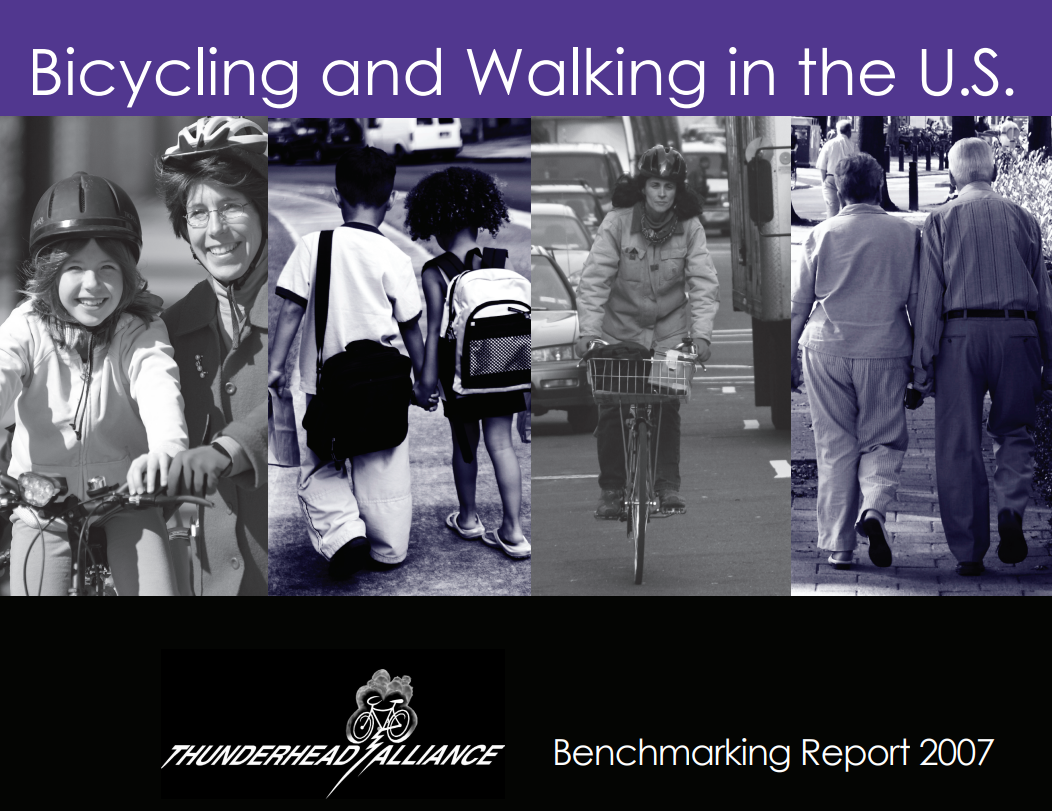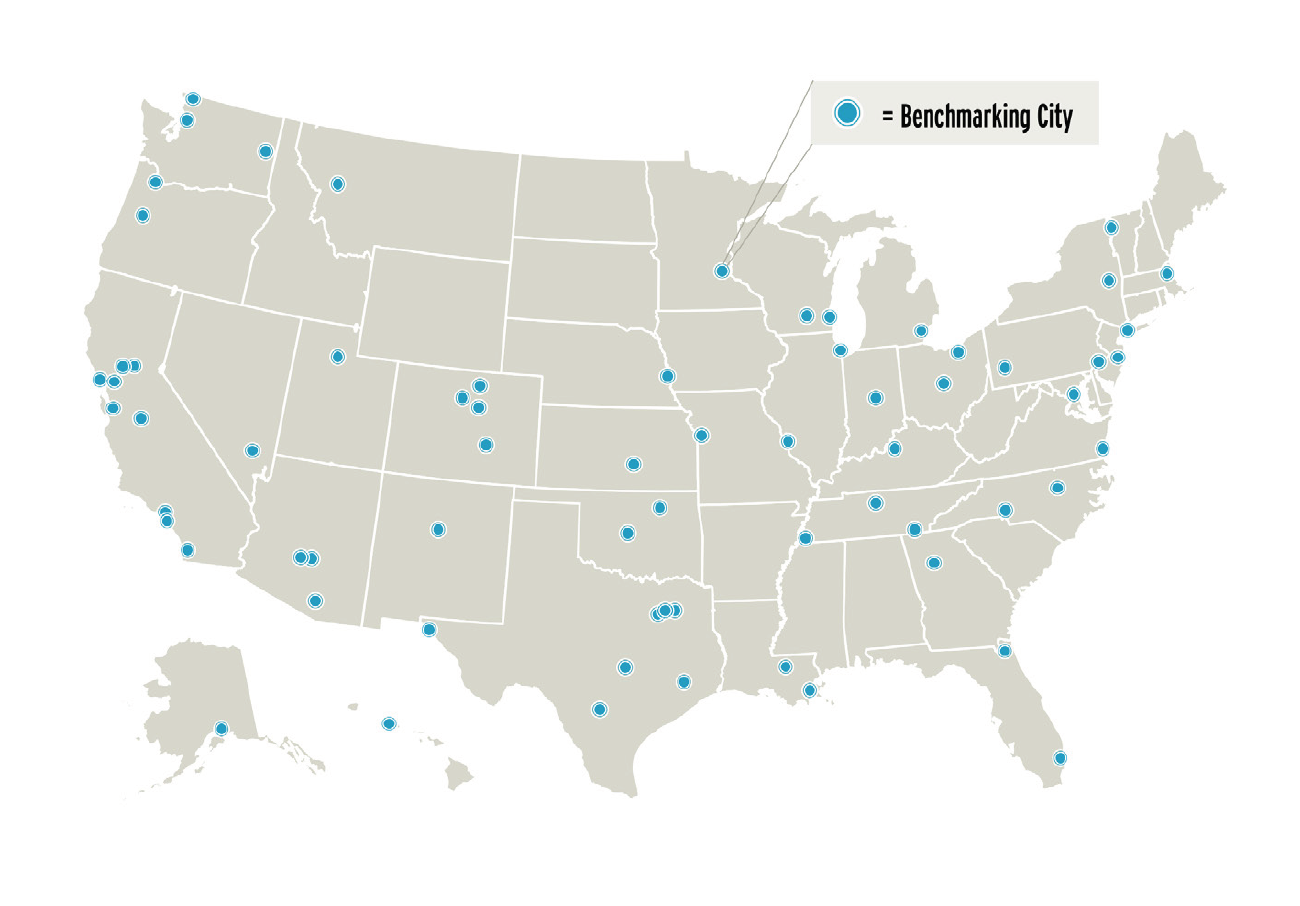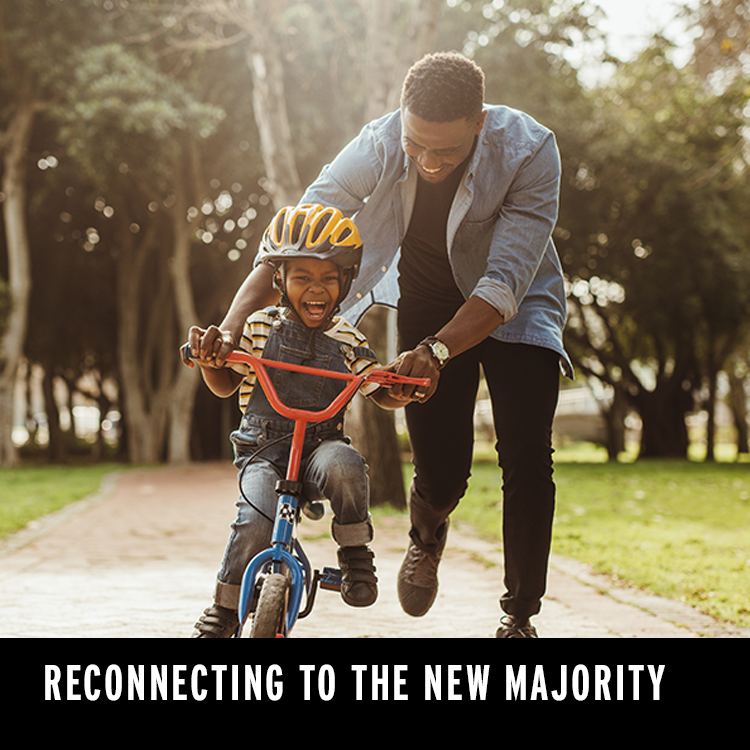About the Benchmarking Report and Data
Data.bikeleague.org is a continuation of a Benchmarking Project begun with a pilot study in 2003. At that time, bicycling and walking advocacy organizations throughout the United States did not have easy ways to compare their cities and states.
The Benchmarking Report was created to be an easy-to-use source of publicly available data that advocates could use to benchmark their cities and states against one another.
We invite you to explore data.bikeleague.org and think about how you can use the data available to benchmark your community and help it achieve its goals for better biking and walking.

The Benchmarking Project has compiled data on bicycling and walking in the United States since a pilot study in 2003.

The Benchmarking Project currently reports on national data, data from all 50 states, and data from 76 selected large cities.

Past editions of the Benchmarking Report from 2007-2018 and recent reports such as Reconnecting to the New Majority and Benchmarking Bike Networks are available for download.
About the League of American Bicyclists
The League of American Bicyclists (the League) was founded in 1880 as the League of American Wheelmen. From its inception it has been a membership organization, working on behalf of its members to improve conditions for people who bike. In the 1880s, the League led the “Good Roads” movement to pave city streets for bicycling, and the League continues to lead the way towards safer, more comfortable bicycling today. The League works with its more than 17,000 individual members, 350-member advocacy organizations, and 6,000 bicycle safety education instructors to build a Bicycle Friendly America for everyone.
The League is proud to continue the work of the Alliance for Biking and Walking by presenting the Benchmarking Project at data.bikeleague.org. Data.bikeleague.org is updated as data becomes available and new topics are explored through dedicated reports.
The last print edition of the Benchmarking Report is the Sixth Edition of Bicycling and Walking in the United States: A Benchmarking Report, published in 2018. Downloadable version of that report and other past Benchmarking Reports are available here.
The Benchmarking Project is intended to be a guide to publicly available data on bicycling and walking, and the public policy that supports creating a healthy, active America through bicycling and walking. We hope you enjoy the data and discussions on this site.
Principal funding for this website is provided by the Centers for Disease Control and Prevention. The findings and conclusions on this site are those of the authors and do not necessarily represent the views of the Centers for Disease Control and Prevention or the Agency for Toxic Substances and Disease Registry.
Additional funding for this site has been provided by AARP, Toole Design Group, and the League of American Bicyclists.
Copyright ©2018 by the League of American Bicyclists
This report may be reproduced or transmitted with the written permission of the League of American Bicyclists.